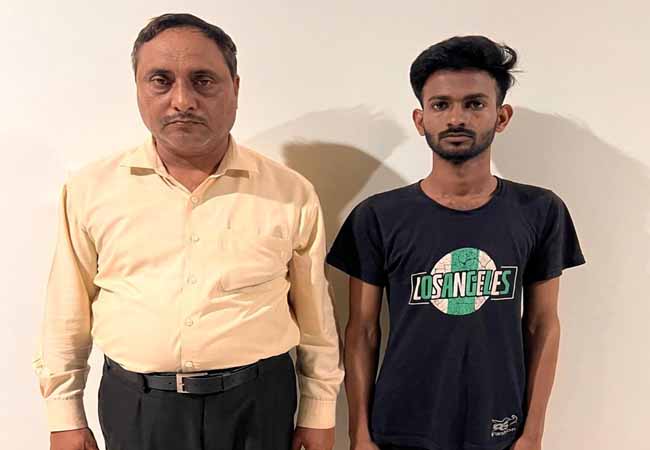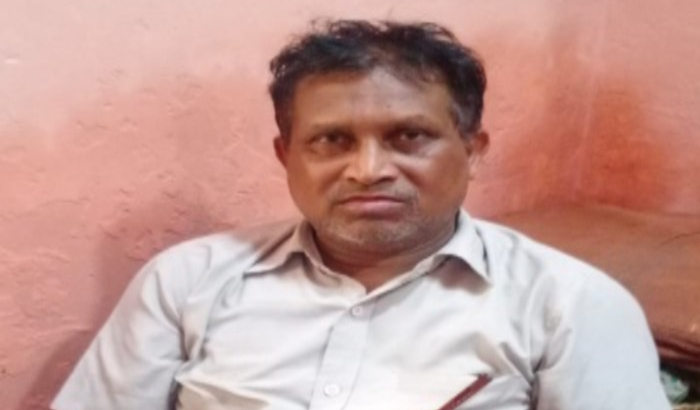Lucknow: Lucknow, the capital of Uttar Pradesh, has seen significant efforts to enhance police networking in recent years, driven by the need to tackle rising crime rates, cybercrime, and maintain law and order in a bustling metropolitan hub. A key component of this improvement has been the strategic use of informers—individuals who provide critical intelligence to the police. Police networking has evolved in Lucknow given the pivotal role informers play.
Improvements in Police Networking in Lucknow
Structural Reforms and Commissionerate System
In January 2020, Lucknow transitioned from a district police system to a Police Commissionerate, headed by an Additional Director General (ADG)-rank officer. This shift, initiated under Chief Minister Yogi Adityanath, aimed to streamline command and improve coordination. The current Police Commissioner, Amarendra Singh Sengar (as of early 2025), oversees a network supported by two Joint Commissioners of Police (JCPs) and five Deputy Commissioners of Police (DCPs) managing five zones: North, East, Central, West, and South. This hierarchical structure has enhanced communication and operational efficiency across the city’s 50 police stations.
Technology Integration
Lucknow Police have embraced technology to bolster networking. The Integrated Traffic Management System (ITMS) and the Crime and Criminal Tracking Network & Systems (CCTNS) allow real-time data sharing among stations. In 2022, the Cyber Cell was designated as the sole investigator of cybercrimes, with police stations relegated to arrests and charge-sheeting, improving specialization and coordination. DCP Cyber Cell Prachi Singh noted in 2022, “Investigation of cases will now be done by the Cyber Cell only as they have all the resources and skills to trace the victims.”
Training and Capacity Building
By February 2023, over 2 lakh UP Police personnel, including those in Lucknow, completed cybercrime training under the National Cybercrime Training Centre (CyTrain) module. UP Cyber Cell SP Triveni Singh stated, “In devising new counter-responses, continual advancement in knowledge and skill of cybercrimes, the module is a core imperative.” This training has equipped officers to collaborate effectively across units, enhancing networked responses to complex crimes.
Community Policing and Digital Volunteers
Initiatives like appointing digital volunteers to monitor social media and counter hate messages have strengthened police-public networking. In 2018, then-DGP O.P. Singh directed nodal officers to work with informers and volunteers to prevent mob violence, a system that has since evolved in Lucknow to include tech-savvy citizens aiding police efforts.
The Role of Informers in Police Networking
Informers, often referred to as “mukhbir” in local parlance, are the eyes and ears of the police, providing actionable intelligence that bridges gaps in formal surveillance. Their role in Lucknow has become increasingly vital amid the city’s growing population and crime challenges.
Intelligence Gathering
Informers supply ground-level information on criminal activities, from petty thefts to organized crime like the 2024 Indian Overseas Bank heist in Chinhat. In that case, DCP East Zone Shashank Singh revealed that tracing a motorcycle used by the gang led to arrests, a breakthrough likely aided by informer tips. Historically, a 2011 initiative allocated secret service funds directly to police stations to groom informers, a practice that continues to fuel intelligence-driven policing.

Breaking Criminal Networks
Informers have been instrumental in dismantling gangs and tracking fugitives. For instance, in December 2024, Sunny Dayal, a suspect in the bank heist, was killed in an encounter after police acted on a tip-off near the Bihar border. Such operations highlight how informers extend police reach beyond jurisdictional limits, enhancing inter-state networking.
Preventive Policing
In 2018, DGP O.P. Singh emphasized informers’ role in identifying hotspots for mob violence, stating, “SHOs of identified areas will maintain extra vigil and keep watch on social media with the help of digital volunteers.” This proactive approach relies heavily on informers to preempt unrest, a strategy refined in Lucknow over the years.
Challenges and Risks
Informers operate in a shadowy realm, often facing threats to their safety. While no specific names of informers are publicly disclosed due to security concerns, their anonymity underscores their critical yet vulnerable position in the network.
2024 Bank Heist Case: The joint operation by SWAT and Surveillance= Surveillance teams, led by figures like DCP Shashank Singh, showcased informer-driven success. Singh noted, “The motorcycle used by the gang was traced first,” hinting at informer intelligence kickstarting the investigation.
Cybercrime Focus: SP Triveni Singh’s leadership in training 2 lakh cops by 2023 reflects a networked approach where informers complement digital forensics.
Leadership: Commissioner Amarendra Singh Sengar has prioritized informer networks, building on the legacy of his predecessor, Sujit Pandey, the first CP of Lucknow in 2020.
Prachi Singh, DCP Cyber Cell (2022): “Arrests will be made by the police station cops, but investigation is now with the Cyber Cell, improving efficiency.”
Triveni Singh, SP Cyber Cell (2023): “The module is a core imperative for advancing skills in cybercrimes.”
O.P. Singh, ex-DGP (2018): “Nodal officers will identify areas… and maintain vigil with informers and digital volunteers.”
Police networking in Lucknow has improved through structural reforms, technology, and training, with informers playing an indispensable role in intelligence gathering, crime prevention, and network expansion. While figures like Sengar, Singh, and Pandey drive these efforts, the unsung informers remain the backbone of actionable insights, ensuring Lucknow’s police force stays ahead in a dynamic urban landscape. As of April 4, 2025, this synergy continues to evolve, promising a more connected and responsive policing system.





